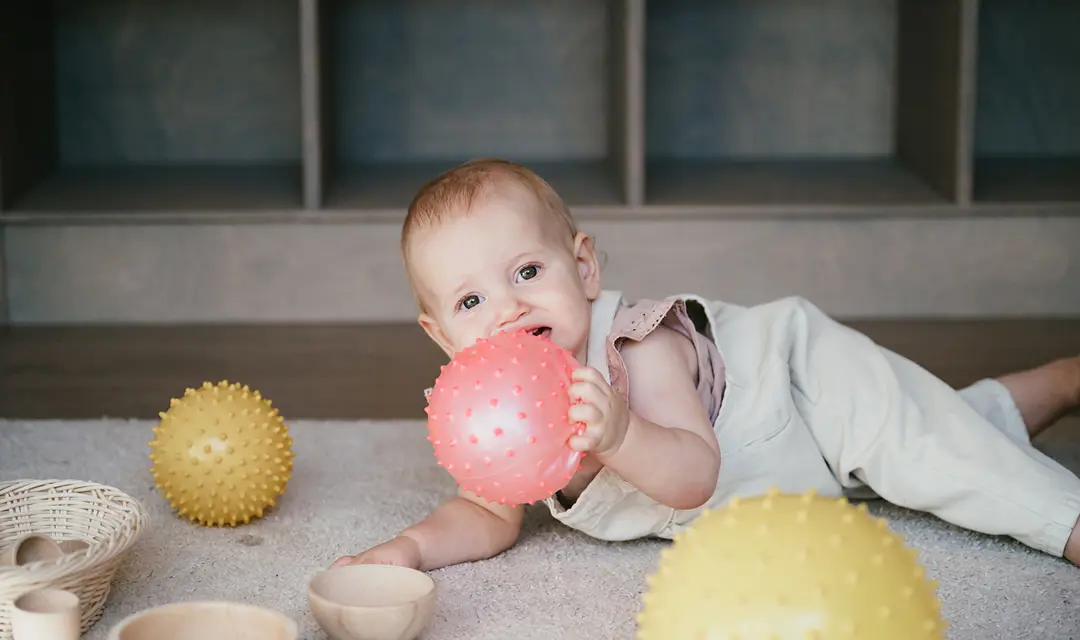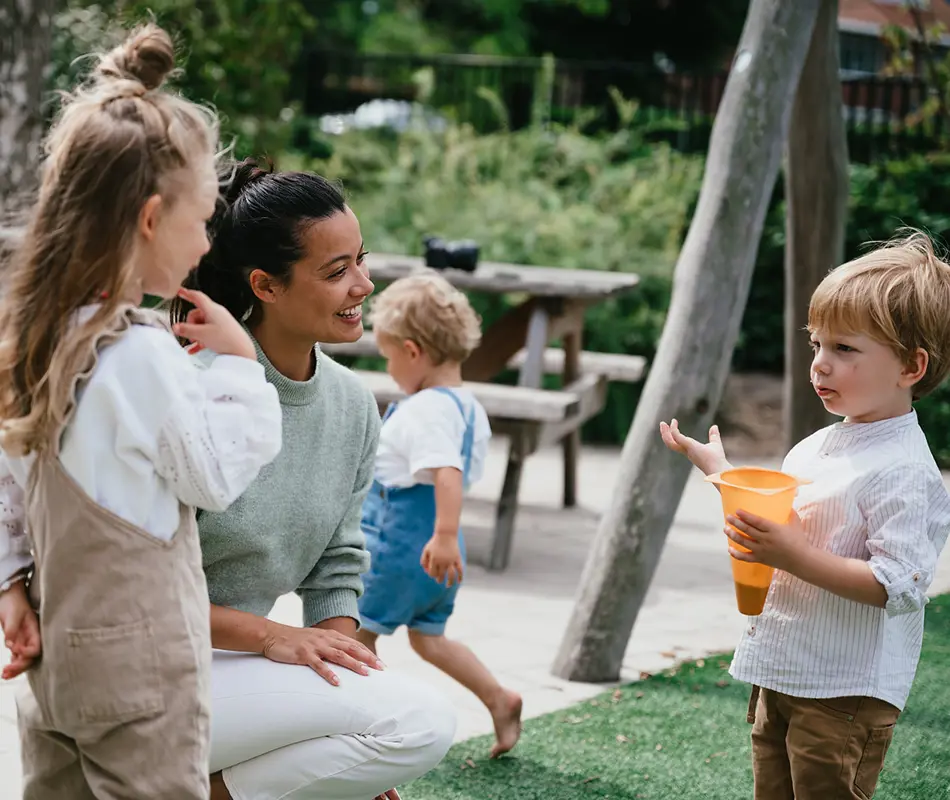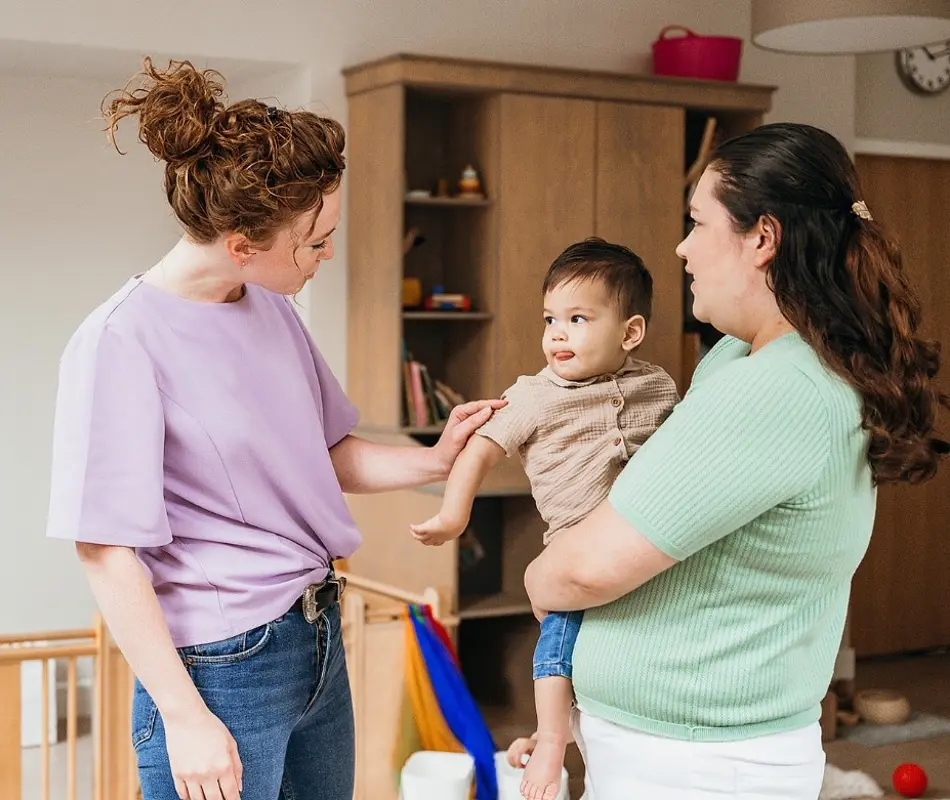Starting at the Daycare at CompaNanny

The settling-in period
When your child goes to Daycare for the first time, he or she will have to process many new impressions. This is why we plan 3 settling-in days, so that your child can quietly become familiar with us. Your child may need more time to get used to it. In that case, we will extend the settling-in period.
The first settling-in day takes place before the start date of the contract, and the other 2 settling-in days from the moment the contract has started. Approximately 4 weeks in advance, you will receive a digital schedule for your child from the Assistant Manager. During the settling-in period, we maintain good contact with you as a parent.

- The first settling-in day: On the first day, you and your child will get to know the Pedagogic Employees and the children in the group in more detail. This day, you will stay with your child in the group for a while and perform a caring activity together with an employee, such as changing their nappy. This gives your child a sense of security, as it gives the employee permission to care for the child. You say goodbye to your child so that he or she can immediately practice being in the group without a parent(s). The first settling-in day takes 2–4 hours.
- The following days of the settling-in period: On the second and third day of settling-in, you can stay with your child in the group for a short while and then say goodbye. The second day of settling-in takes 4–6 hours and the third day takes 6–8 hours.
Care products at the Daycare
The Daycare has almost everything needed to care for your child. We have food, nappies, wipes and sleeping bags. We do ask that you bring a bottle for your baby, a pacifier, extra clothes for when clothes get dirty and possibly a cuddly toy/cloth for in bed.
Nutrition
Bottle feeding and healthy meals
In your child's first year of life, we take a close look at what suits your child's needs and rhythms. We start with bottle feeding and gradually build up to solid food. We provide a variety of vegetables, fruit, crackers and spreads and let the children choose what they want to eat. Our meals and snacks are always healthy and responsible!
Hot lunch
At most branches, children aged 9 months and over are served a hot, fresh lunch prepared by Moekes Maaltijd. These meals are especially for children and are made from organic ingredients. The dishes contain no artificial additives and have little to no salt and spices.
The feeding schedule below is discussed in detail during the intake interview and changes in diet are always made in consultation.
Sleep
At the Daycare, each child has their own bed to sleep in. The Pedagogic Employees take into account the individual sleep needs of each child, with babies maintaining their own sleep rhythms.
Children from about 8 months to 1.5 years old sleep twice a day, and from about 1.5 to 3 years old they sleep once a day after lunch. When your child is 3.5 years or older, we start to phase out sleeping so that your child can prepare for primary school. This will be done in consultation with you.

Our employees
When employees feel good about themselves, they can provide the best care to the children. That is why we pay a lot of attention to their development and job satisfaction. We make sure they feel seen and appreciated!
Within our own academy, employees can follow various training courses and education. Both in the field of teaching and personal development. In our close-knit teams at the branches, they work closely together in many different functions. They strengthen each other and share the same love for the profession. In this way, our employees work together to create high-quality childcare and are the experts in the field of child development.

Communication with the children
In our communication with children, we ensure that they feel heard, understood and respected. We do this by listening carefully to what they have to say, by naming emotions and communicating at eye level. We also do not judge, but describe what we see.
We draw inspiration from the How2talk2kids method. This way of communicating contributes to the child's self-confidence and sense of security.
Communication with you as a parent
The Parent Portal
Every day, our Pedagogic Employees will keep you informed about your child's day via the Parent Portal. In the Parent Portal app, they share photos of your child, and you can read in the digital diary how the day went. Is your child ill or do you want to report a holiday? You can also easily arrange this in the Parent Portal. We will inform you about developments at the branch or within CompaNanny via news items in the app.
Handover
To ensure that your child has a pleasant day at our Daycare, we have 2 verbal handover moments every day. When you arrive, our Pedagogic Employees would like to know how and at what time your child ate and slept. When picking up your child, the Pedagogic Employees will discuss with you how the day went and whether there were any special circumstances.

The daily routine at the Daycare
At the Daycare, the younger babies each have their own rhythm. The toddlers and preschoolers follow our fixed daily routine, because this provides clarity and predictability for young children. For example, we go outside to play in a circle at fixed times, and meal times are always at the same time.
Our Pedagogic Employees tell the children what we are going to do and when it is time for another activity. This way they know what to expect and children can prepare for the next moment of the day at their own pace.
Play and activities at CompaNanny
Childcare costs and childcare allowance
Before choosing a childcare, it is nice to know what the costs will be. You can easily calculate the costs of childcare with our handy calculation tool. We are also happy to explain which services are included in our rates, when you are entitled to childcare allowance and how to apply for this.

Register or questions?
Did you get a good impression of our Daycare and are you still enthusiastic? Then register immediately!
If you have any questions, please contact Sofie and her Planning & Placement team.
Frequently asked questions after a tour
I want to register my child with CompaNanny. How can I do that?
-
You can register your child via our website. Registering means that you register your child without obligation and free of charge for one (up to a maximum of three) of our branches. Registering does not mean you have any obligation, but it does increase your chance of a place. After we have received your registration, we will check whether we can offer you a place immediately. Otherwise we will put you on the waiting list. As soon as we can offer you a place, we will contact you to discuss the possibilities. Our Planning and Placement team will confirm each registration by email once it has been processed.
What happens after I register?
-
Registering means that you register your child without obligation and free of charge for one of our branches. This means you are not bound by anything yet. You can register for a maximum of 3 branches at the same time. After you have registered your child, we will deal with your registration immediately. You will receive confirmation once your request has been processed. As soon as a place becomes available, we will contact you to discuss the possibilities. In the meantime, you are of course more than welcome to drop by for a guided tour.
For how many weeks per year do you offer childcare?
-
Most branches offer childcare for 52 weeks per year. Some branches for 51 weeks a year (closed between Christmas and New Year). Toddler care is always for 40 weeks per year.
What are the costs for childcare?
-
We use a fixed hourly rate per service. The costs are calculated per month based on the number of days that your childcare is purchased. Costs may vary by branch. You can find the rates on the branch page of the branch.
Am I entitled to childcare allowance?
-
Whether you are entitled to childcare allowance depends on a number of conditions. These conditions are:
- The children living at home are registered at your home address.
- You as a parent or your allowance partner pay the costs for childcare.
- You and your partner both work or receive a contribution from the municipality or UWV under the Childcare Act.
Find out whether you are entitled to childcare allowance and how much at www.belastingdienst.nl/rekenhulpen/toeslagen.








